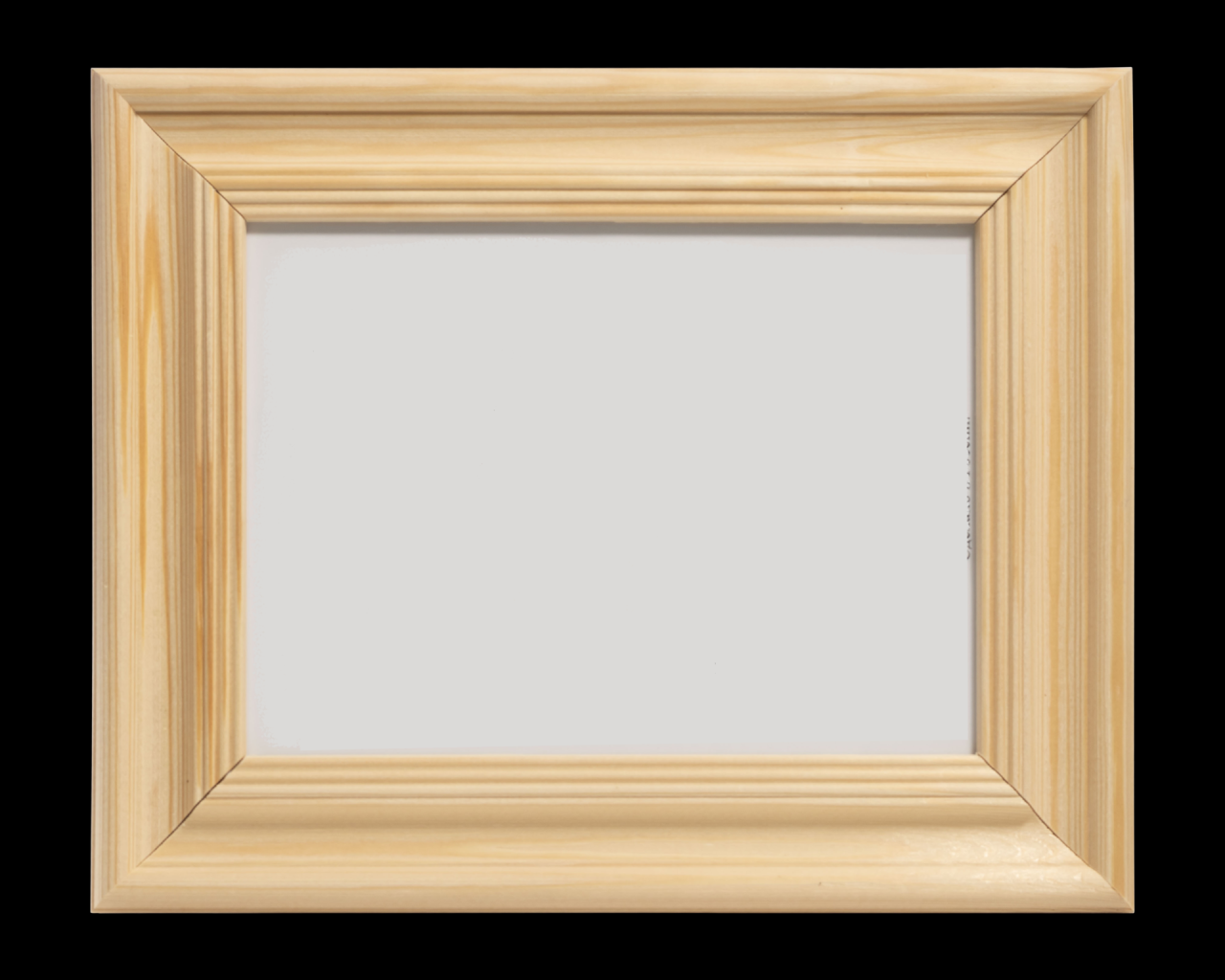Introduction to Framing a Canvas

Framing a canvas is the process of enclosing a painting or artwork within a protective border, often made of wood, metal, or other materials. This process not only enhances the visual appeal of the artwork but also significantly contributes to its preservation. Proper framing safeguards the canvas from environmental factors like dust, humidity, and UV light, extending its lifespan and maintaining its aesthetic integrity.
The importance of framing a canvas goes beyond simply presenting it. A well-chosen frame can complement the artwork’s style and subject matter, highlighting its unique characteristics. Moreover, the frame serves as a protective barrier, preventing damage from accidental contact or the elements, which can be crucial in maintaining the artwork’s condition for generations. Different types of frames offer varying levels of protection and aesthetic appeal.
Types of Frames
Various materials are used for framing canvases, each with its own set of advantages and disadvantages. Wooden frames are a traditional choice, offering a classic look and often a good balance of sturdiness and affordability. Metal frames, particularly those made of aluminum or other lightweight metals, provide a contemporary feel and are frequently chosen for their durability and lightweight nature. Matted frames, which use a secondary layer of material (like acid-free mat board) between the artwork and the frame, help to protect the artwork and create a visual separation, enhancing its presentation.
Frame Size and Artwork Relation
The size of the frame is critical to the presentation of the artwork. A frame that is too small can make the artwork appear cramped and overwhelmed, whereas a frame that is too large can diminish the artwork’s impact. The ideal frame size should balance the artwork’s dimensions and visual weight. Frame size considerations should take into account the artwork’s subject matter, its color palette, and the overall aesthetic intent. For example, a large, bold painting might benefit from a more substantial frame, while a delicate watercolor might be better suited to a more subtle, less prominent frame.
Pros and Cons of Framing Materials
| Material | Pros | Cons | Suitable for |
|---|---|---|---|
| Wood | Classic look, good balance of sturdiness and affordability, often customizable with finishes. | Can be susceptible to warping or damage from moisture, heavier than some other materials. | Traditional paintings, landscapes, and artwork that benefits from a warm, natural aesthetic. |
| Metal | Durable, lightweight, and resistant to moisture damage, contemporary aesthetic, comes in various finishes. | Can sometimes lack the warmth of wood, may not be as visually substantial as a large wooden frame. | Modern and contemporary art, paintings with strong lines and bold colors, or when lightweight is a priority. |
| Acrylic | Lightweight, strong, and resistant to warping or damage, clear and modern appearance, budget-friendly. | May not offer the same level of visual richness as wood or metal, can be more prone to scratching. | Artwork that needs a lightweight but durable frame, smaller or medium-sized canvases. |
Choosing the Right Frame

Selecting the appropriate frame is crucial for showcasing your artwork to its best advantage. A well-chosen frame enhances the piece’s aesthetic appeal and protects it from damage. Consideration must be given to the artwork’s style, subject matter, and overall aesthetic to ensure a harmonious presentation.
Careful selection of the frame not only complements the artwork but also elevates its visual impact. A poorly chosen frame can detract from the artwork’s inherent beauty, whereas a frame that complements the piece can amplify its artistic merit.
Essential Considerations for Frame Selection
Careful consideration of several factors is necessary when selecting a frame for a specific artwork. These factors include the artwork’s style, color palette, subject matter, and the desired overall aesthetic.
Influencing Factors of Frame Style
The style of the frame should ideally complement the artwork’s style and color palette. A modern abstract piece, for instance, might look stunning in a sleek, minimalist frame, whereas a traditional landscape painting might benefit from a more ornate, classic frame. The frame’s color and material should also harmonize with the artwork’s palette and subject matter. For example, a warm-toned landscape painting might look best in a frame with a light wood finish.
Matching Frame to Artwork Subject Matter
The subject matter of the artwork can also guide frame selection. A portrait of a person might look best in a frame that emphasizes the subject’s likeness, while a landscape painting might benefit from a frame that evokes the sense of space and openness.
Examples of Artworks and Corresponding Frame Styles
Consider a vibrant abstract painting. A bold, contemporary frame, perhaps in a metallic finish, would accentuate the piece’s dynamic colors and shapes. Alternatively, a serene landscape painting featuring a tranquil river and forest would likely benefit from a classic, light wood frame, creating a sense of harmony and calm.
Table of Frame Styles and Corresponding Art Types
| Art Style | Frame Style | Example |
|---|---|---|
| Abstract | Modern | A bold, geometric abstract painting framed in a black, matte metal frame. |
| Landscape | Classic | A serene landscape painting with a light, natural wood frame. |
| Portrait | Ornate | A detailed portrait with a gilded, carved wooden frame. |
| Figurative | Simple | A contemporary figurative painting framed in a clean, white mat and simple wooden frame. |
Measuring and Preparing the Canvas

Accurately measuring and preparing your canvas is crucial for a precise and professional-looking frame. Proper preparation ensures the canvas is protected and the frame fits perfectly, maximizing the presentation of your artwork. This section details the steps involved in this process.
Precise measurements are vital for a successful framing experience. A poorly measured canvas will lead to a poorly fitted frame, compromising the artwork’s presentation. This section will Artikel the process, providing tools and techniques for a flawless fit.
Measuring the Canvas
Accurate measurements are essential to ensure a proper frame fit. The process involves carefully determining the dimensions of the canvas. Inaccurate measurements will result in a poorly fitting frame, so precision is key.
- Outer Dimensions: Measure the canvas’s outer dimensions, including the edges of the stretcher bars or the painted area. Use a measuring tape, ensuring it’s placed straight against the canvas’s edges. Record both the width and height in a designated space.
- Inner Dimensions (Optional): If the canvas has a painted area that is smaller than the outer dimensions, it is advisable to measure the inner dimensions as well. This ensures the frame is properly sized and doesn’t obscure the painted area. Record both width and height of the inner area.
- Precise Measurements: Take multiple measurements at various points on the canvas to ensure accuracy, especially if the canvas is irregular. This will provide an average value.
- Accurate Recording: Record the measurements accurately in a notebook or digital document, noting any unique characteristics.
Preparing the Canvas
Preparing the canvas involves cleaning and conditioning to ensure a stable surface and prevent damage to the artwork.
- Cleaning: Gently clean the canvas with a soft cloth and a mild cleaning solution, taking care not to damage the surface or the paint. Avoid harsh chemicals. Use a cotton swab for delicate areas. Ensure the canvas is completely dry before proceeding.
- Conditioning: Examine the canvas for any signs of damage, such as cracks or tears. For canvases that are very fragile or show signs of damage, seek professional advice. Proper conditioning ensures that the canvas remains stable during the framing process.
- Stabilization (if needed): For canvases that are loose or have deteriorated, consider stabilization techniques, such as using canvas support boards or stretching the canvas with the appropriate materials. Consult with a framing professional if you’re uncertain.
Ensuring a Precise Fit
The following steps Artikel a procedure for ensuring the frame fits the canvas perfectly.
- Prepare the Frame: Ensure the frame’s inner dimensions match the canvas’s outer dimensions, allowing for a snug fit. Ensure there is a gap for any needed mounting.
- Secure the Canvas: Use appropriate framing techniques to secure the canvas to the backing board, ensuring it’s stable. Use clips or adhesive as needed. Ensure the canvas is correctly aligned and positioned.
- Final Inspection: Thoroughly inspect the canvas and frame to ensure a perfect fit and alignment. Correct any misalignments.
Visual Guide
| Measurement Technique | Description | Image |
|---|---|---|
| Measuring the Outer Dimensions | Use a measuring tape to precisely measure the canvas’s width and height, ensuring the tape is straight against the edges. | Imagine a straight measuring tape placed along the edge of a canvas. |
| Measuring the Inner Dimensions | Measure the painted area, if different from the outer dimensions, to ensure the frame doesn’t obscure the artwork. | Imagine a measuring tape placed along the painted edge of the canvas. |
Checklist of Materials
- Measuring tape
- Notebook or digital document
- Soft cloth
- Mild cleaning solution
- Cotton swabs (optional)
- Canvas support boards (if needed)
- Framing materials (clips, adhesives)
Mounting and Securing the Canvas

Proper mounting and securing of the canvas to the backing board and frame is crucial for the longevity and presentation of your artwork. A well-mounted canvas will resist warping, cracking, and damage, ensuring your artwork remains in pristine condition for years to come. Careful consideration of the chosen methods and materials will significantly impact the artwork’s stability and aesthetic appeal.
Mounting the canvas involves attaching it to a backing board, providing a stable surface for the artwork. The method used depends on the size and weight of the canvas, the desired aesthetic, and the type of frame. Different materials and techniques offer varying degrees of support and protection.
Mounting the Canvas onto the Backing Board
A backing board provides a stable surface for the canvas and helps prevent warping or sagging. A common choice is acid-free mat board, known for its archival quality and resistance to discoloration over time. The backing board should be slightly larger than the canvas to allow for a secure and even mount.
Methods of Mounting
Various techniques can be employed to attach the canvas to the backing board, each with its own advantages. Acid-free mat board is often used as a mounting medium due to its archival quality. The canvas is usually adhered to the mat board using a specialized adhesive. An alternative approach is using archival-quality double-sided tape or a similar mounting adhesive designed for artwork.
Attaching the Canvas to the Frame
Once the canvas is securely mounted to the backing board, it’s time to attach it to the frame. Several techniques can be used for this step, each suited to different circumstances.
- Using adhesive: Specialized canvas-to-frame adhesives are available, offering a secure and clean mounting. These adhesives are typically designed to be removable without damaging the canvas or frame. The application of the adhesive is critical for a successful mount. Ensure proper drying time to avoid issues with the canvas’s adherence to the frame. This method is often preferred for its versatility and ability to maintain the artwork’s integrity.
- Using tacks or staples: For canvases that are tightly stretched, using tacks or staples can be a suitable option. However, this method should be used cautiously, ensuring the tacks or staples are not too large or numerous, as they could potentially damage the canvas’s surface. Use small tacks or staples strategically to avoid any punctures or tears.
- Using a hidden mounting system: A hidden mounting system, like a specialized mounting clip or a similar attachment mechanism, can provide a secure and aesthetically pleasing result. This method typically involves carefully aligning the canvas with the frame and using the clips to attach the canvas. It offers a clean and unobtrusive mounting, which is particularly useful for preserving the artwork’s presentation.
Examples of Mounting Techniques, How to frame a canvas
Various examples illustrate the application of these mounting techniques. A small, delicate canvas might benefit from adhesive, ensuring minimal impact on the artwork’s surface. A larger, heavier canvas might require a combination of tacks or staples and adhesive for enhanced support. A professional framing service can offer expert advice and implement the optimal mounting techniques for various canvas types.
Securing the Canvas to the Frame
Different methods are used to secure the canvas to the frame to prevent sagging, warping, or damage.
- Stretching over stretcher bars: This technique involves stretching the canvas over wooden stretcher bars. This method is commonly used for paintings, providing a secure and stable support system. Proper stretching ensures the canvas is taut and even across the frame.
- Stapling or tacking: For canvases already mounted to a backing board, using tacks or staples to attach the canvas to the frame provides a simple and effective method. This method requires careful placement to avoid damaging the canvas. The canvas should be taut and properly aligned on the stretcher bars.
- Using a specialized frame: Some frames are designed with built-in mounting mechanisms, simplifying the attachment process. These systems typically use clips or other attachments to hold the canvas securely in place.
Finishing Touches and Display: How To Frame A Canvas

Completing the framing process involves more than just securing the canvas to the frame. Careful attention to finishing touches and display enhances the artwork’s presentation and longevity. Proper glazing protects the artwork from dust and damage, while thoughtful display maximizes its impact.
A well-framed canvas is not just a finished product; it’s a presentation of the artwork that should elevate the piece to a new level of appreciation. The finishing touches are essential to its overall impact.
Glazing Options
Glazing options play a crucial role in preserving and enhancing the visual appeal of framed artwork. They offer varying levels of protection and aesthetic impact.
Different glazing options cater to various needs. Archival glass, known for its clarity and resistance to yellowing, is ideal for protecting delicate artworks. Plexiglass, on the other hand, provides a similar level of clarity but is more resistant to shattering, making it suitable for high-traffic areas or artworks that may be exposed to more frequent handling. Finally, UV-filtering glass protects the artwork from the damaging effects of ultraviolet light, preserving its colors and vibrancy over time.
Hanging the Framed Canvas
Hanging the framed canvas involves careful consideration of the artwork’s size, the wall’s characteristics, and the desired aesthetic effect. The correct placement can dramatically impact the artwork’s presentation.
For optimal display, consider the artwork’s dimensions in relation to the surrounding space. A large piece might benefit from a more prominent placement, while a smaller piece can be highlighted by strategically positioning it. Using a level and measuring tape ensures a straight and balanced hanging. Use appropriate hardware, such as picture hangers or D-rings, based on the frame’s design. Consider the weight of the framed piece and use sturdy hardware that can support the weight.
Safe Handling and Storage
Safe handling and storage of framed artwork are crucial for preserving its condition and longevity. Proper care protects the artwork from damage and ensures it remains in pristine condition for years to come.
When handling framed artwork, avoid touching the artwork directly. Always handle the frame, and support the artwork from underneath. Avoid placing the artwork in direct sunlight or extreme temperatures. Store the framed piece in a climate-controlled environment with stable humidity and temperature levels to minimize the risk of warping or damage. Consider using acid-free archival storage boxes to protect the artwork from environmental factors and potential damage.
Display Options
Different display options offer various advantages and considerations. The choice of display location should align with the artwork’s size, style, and the desired aesthetic effect.
| Display Option | Advantages | Considerations |
|---|---|---|
| Wall-mounted | Provides a prominent display, enhancing the artwork’s impact in a room. | Requires wall-mounting hardware, considerations for the artwork’s size in relation to the room, and careful planning to avoid potential damage to the wall. |
| Tabletop | Offers a versatile display option, suitable for showcasing artwork in various settings, such as living rooms, offices, or dining areas. Provides an opportunity to showcase the artwork in a more personal and intimate setting. | Requires a stable surface, and the artwork’s size should be proportionate to the tabletop surface. May require additional lighting or careful positioning for optimal viewing. |
| Gallery Wall | Creates a dynamic and visually engaging display that can effectively showcase multiple pieces of artwork. | Requires careful planning and coordination to create a balanced and cohesive presentation. The arrangement of pieces should consider their sizes, styles, and colors. |
Detailed FAQs
How to frame a canvas – What are the most common mistakes people make when framing a canvas?
A common mistake is using a frame that’s too small or too large for the canvas. Another is neglecting to properly prepare the canvas by cleaning and conditioning it before mounting. Lastly, not considering the artwork’s style when selecting a frame can also lead to an unappealing result.
What types of mounting methods are available?
Common mounting methods include using acid-free mat board, backing boards, and various adhesive techniques. The optimal method depends on the canvas size, frame type, and desired aesthetic.
What is the importance of using acid-free materials for framing?
Acid-free materials are crucial for preserving the canvas and artwork’s integrity over time. Acids can cause discoloration, warping, and deterioration of the artwork.